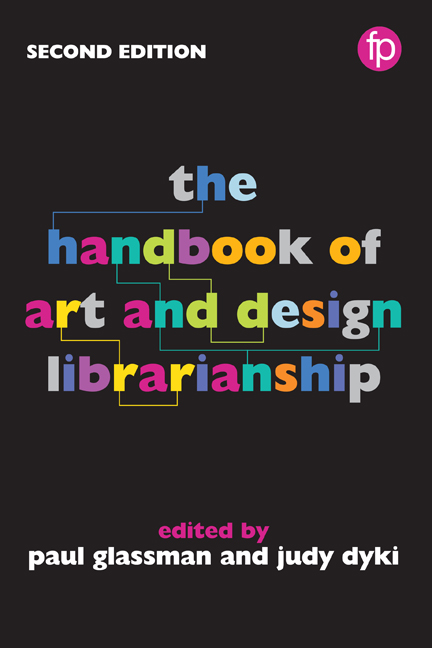Book contents
- Frontmatter
- Contents
- List of figures and tables
- Notes on contributors
- Foreword
- Preface
- Part I Roles and responsibilities
- Part II Materials and collection management
- Part III Teaching and learning
- Part IV Knowledge creation
- Part V The physical environment
- 25 New, renovated and repurposed library spaces: responding to new demands
- 26 Why is that column in the middle of the room? Success in creating classrooms for library instruction
- 27 Finding common ground: creating library spaces for collaboration
- Part VI Promotion and sustainability
- Appendix Library profiles
- Index
25 - New, renovated and repurposed library spaces: responding to new demands
from Part V - The physical environment
Published online by Cambridge University Press: 08 June 2018
- Frontmatter
- Contents
- List of figures and tables
- Notes on contributors
- Foreword
- Preface
- Part I Roles and responsibilities
- Part II Materials and collection management
- Part III Teaching and learning
- Part IV Knowledge creation
- Part V The physical environment
- 25 New, renovated and repurposed library spaces: responding to new demands
- 26 Why is that column in the middle of the room? Success in creating classrooms for library instruction
- 27 Finding common ground: creating library spaces for collaboration
- Part VI Promotion and sustainability
- Appendix Library profiles
- Index
Summary
Changing typologies in contemporary library design
The 21st century has been a challenging and exciting time in library building design. At the turn of the century there were doom-laden predictions that the physical library would cease to be important in the new electronic age as users would want everything delivered to their desktops at home or at work, and funders would be unwilling to invest in potentially redundant buildings. Instead, libraries embraced technology, shifting from largely collection-based spaces to more flexible ones that encouraged interactions and connections between library users and resources in all formats, between library users and each other, and between library users and library staff. Library design was ‘no longer largely governed by the storage and display of resources or by the need for spaceconsuming issue and service desks but rather by the needs of users. And the creation of exciting and attractive library space has been shown to bring people into the physical library to use virtual resources’ (Latimer, 2011, 126).
The challenge is to create attractive, functional library spaces that support new ways of learning and digital literacy and take advantage of technological advances. The classic library building that housed predominantly print collections so successfully for many centuries does not necessarily provide a model for today's library learning spaces. Many of the basic tenets still hold true, however. The quintessential purpose of the library as a gateway to knowledge and as a centre for resources and ideas remains the same, and the trend towards expanding that principle to include creating knowledge and making physical prototypes is, in fact, something that art libraries have long embraced. In his overview of library evolution Brian Edwards points out that ‘there was not much difference in the architectural arrangement between the Renaissance art gallery and that of the library’ (2009, 4). Although that difference is more marked today, exhibition space remains important in the modern library, especially if linked to the curriculum, and has been made more feasible through the freeing up of space as a result of compact and collaborative storage and through collection management through the digitization of resources.
- Type
- Chapter
- Information
- The Handbook of Art and Design Librarianship , pp. 263 - 276Publisher: FacetPrint publication year: 2017
- 1
- Cited by

